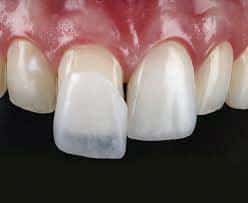Material and Composition
Difference Between Composite and Laminate

Difference Between Composite and Laminate
Having a beautiful smile is one of the factors that greatly influences your face and enhances its beauty. Moreover, having pearly white teeth gives you more confidence. To have uniform, white, natural, and beautiful teeth, you can use various cosmetic dentistry methods. Both composite and laminate are popular methods that you can use in this regard. In fact, both of these methods create coatings on your teeth that cover the flaws of natural teeth and give them a uniform and beautiful appearance. If you are unable to make a definite decision in choosing the type of tooth covering and are confused between composite and laminate, in this article, we will examine and address the differences between composite and laminate from all aspects for you.
Comparison of Composite and Laminate from Different Perspectives
Material and Composition:
- Laminate veneers are thinner than composites. Laminate uses thin porcelain shells, while composite uses a synthetic mixture of resin with glass.
Construction and Execution:
- In ceramic laminate, the patient's teeth need to be trimmed, then impressions are taken, and finally sent to the laboratory. Generally, laminate execution takes about 2 to 3 weeks, whereas there is no need for trimming or impressions for composite application, and the entire treatment process is done by the dentist.
Application:
- As mentioned, in the application of laminate, teeth are trimmed, so if the flaws in the patient's teeth include breakage, gaps, or significant discoloration, choosing laminate will be more practical. However, if the flaws and imperfections of the teeth are minor, composite is a more reasonable choice.
Durability:
- Ceramic laminate is more durable and has higher strength compared to composite, but it causes more damage to natural teeth during application. Regarding the durability of laminate and composite, it should be noted that composites are more color-stable, and for maintaining their whiteness, they need polishing every 6 months. If we approximately estimate the lifespan of laminate and composite, laminate will last about twice as long as composites. However, this issue also depends on oral hygiene, but generally, laminates will last about 10 to 12 years, while composites will last about 5 to 7 years.
Repairability or Replaceability:
- Another difference between composite and laminate is that if a problem occurs or damage is done to the laminate, it cannot be repaired, but it needs to be replaced, while composites are repairable.
Installation Method:
- The installation method and duration of composite and laminate application are another aspect to consider. The installation time for composite is shorter compared to laminate because it takes about 5 hours for each jaw for composite material placement, while the entire process of ceramic laminate takes two weeks to a month.
Appearance of Laminate and Composite:
- Laminate is thinner and more transparent compared to composite, thus providing a more natural appearance. So if you're looking for a method that gives a natural appearance to your teeth, choose laminate. Another aspect to consider in terms of the visual difference between laminate and composite is that laminate is made of stronger materials along with glaze, making it more resistant to color absorption and breakage.
Price:
- Another difference between composite and laminate is their price. Since the installation of ceramic laminate takes more time and the final laminates are prepared through impression and sent to the laboratory, while composites are applied only through layering and using dental laser, laminate is more expensive due to the longer time and expertise required for installation. Additionally, considering that ceramic laminate is made of more resistant and expensive materials than composite, this factor also results in a higher price for laminate application.
Factors for Choosing Composite or Laminate
1. Age of the Patient:
- Since teeth are trimmed in ceramic laminate application, attention should be paid to the age of the patient in this regard. In fact, ceramic laminate is suitable for individuals whose tooth growth is complete, such as girls after the age of 17 and boys after the age of 20. If the age of the individuals is younger, it is better to use composite.
2. For Children:
- If you intend to perform laminate or composite for children, it is better to use composite because children are constantly exposed to bumps and knocks, and there is a possibility of tooth breakage and damage, and composite material is repairable.
Composite or Laminate?
To determine which one of the cosmetic treatments, composite or laminate, is suitable for you, you need to familiarize yourself with the differences between these methods. In this article, we briefly explained these differences. To provide a general guide for choosing between composite and laminate, it can be said that composite can be a suitable method for individuals who intend to make minor and quick changes in the appearance and shape of their teeth, while laminate can bring more extensive and long-lasting changes.
Conclusion
In this article, we have generally acquainted you with the difference between composite and laminate so that you can choose the best method for repairing your damaged or misshapen teeth by considering all aspects of both methods. However, keep in mind that factors such as the condition and status of your teeth, age, patient's preference, and the opinion of a specialist dentist also play a role in determining whether composite or laminate will be effective for you.
